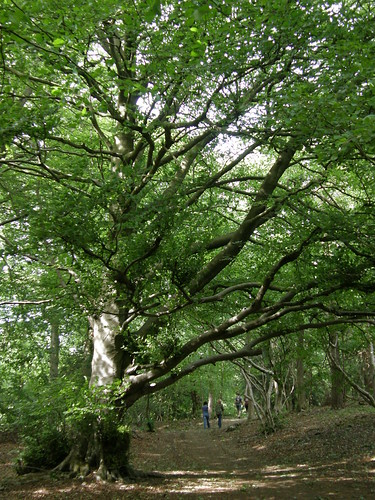Another cold and frosty day. Fine weather still, but the sunshine was more intermittent today. This morning all of the kids joined me for a trip to Woodwell. We took the field path to Silverdale Green and then went along the cliff-top to Hollins lane before doubling back to Woodwell.

King Alfred’s Cakes on a dead tree trunk.
The jew’s ear fungus that we saw on Christmas Eve had dried to husks, but the oyster mushrooms were still there, if not looking quite as appetising as they had.

Woodwell pond was frozen over…

…and A and B enjoyed throwing stones at the ice, until B skewed one sideways and hit A on the head. I’ve been reading The Book of Idle Pleasures (a Christmas present from TBH) and breaking ice with sticks, stones or heels is one obvious omission – perhaps they’re planning a volume two.
We saw lots of other walkers out and about, but we had Woodwell to our selves until an old lady passed with her dog (we had passed her on the cliff-top too).
“Have you seen a heron?” she asked,”I saw one yesterday and the day before, but as soon as somebody walks up it flies away.”
We hadn’t, although we did see one near here on Christmas Eve fishing in a garden pond. However, as soon as she was gone, there it was wheeling around above the field next to Bottom’s Wood.
We found an old kettle in Bottom’s Wood…

…and wondered if anybody had been trialling stoves hereabouts. Doesn’t look very lightweight though.
Later, I headed back the same way on my own, but then continued to Heald Brow. It’s a National Trust property of open areas, rocky outcrops, thickets of thorny shrubs and some mature trees. The NT information board shows a single path looping round the area and back to the right of way, but in fact the area is criss-crossed by paths. Not having been here for a while, I took a tour. At the back of the field, where it abuts woodland, a buzzard dropped lazily out of a tree and with a couple of wingbeats was twenty yards further back in another tree. It didn’t stay there long enough for me to attempt a photo unfortunately, but was off again with a plaintive mewing call.

Frosty ant-hills at Heald Brow
I dropped down the steep bank to the salt marsh at the end of Quaker’s Stang and then walked beside Quicksand Pool to Jenny Brown’s Point where lots of ducks and waders were probing the mud of the bay. In fading light I returned by Jack Scout, Hollins Lane and the cliff-top path. Almost home, I heard the call of a tawny owl. It seemed close, perhaps in one of the oak trees behind the house. I stared hopefully into the darkness and the branches of the nearest tree, seeing nothing until, like the buzzard, the owl took to the wing. Within seconds it was swallowed up by the night.























































